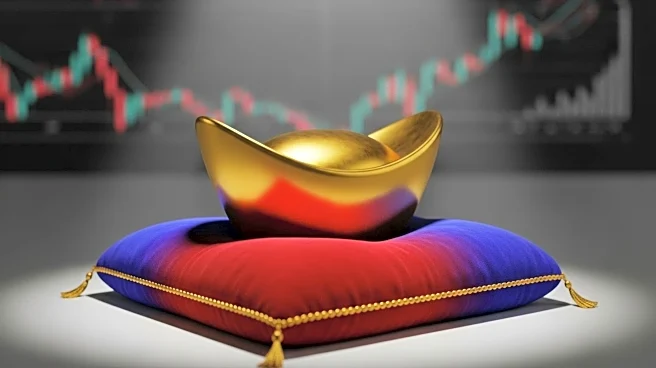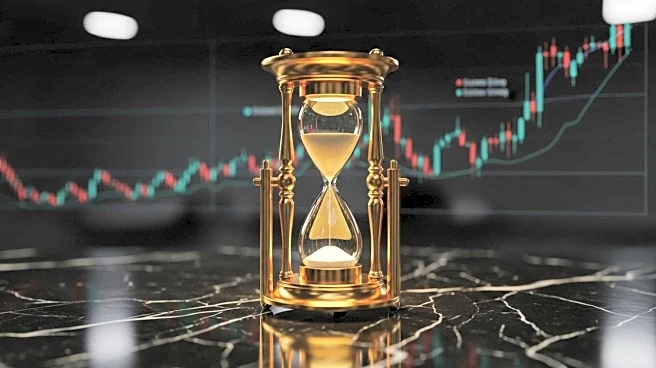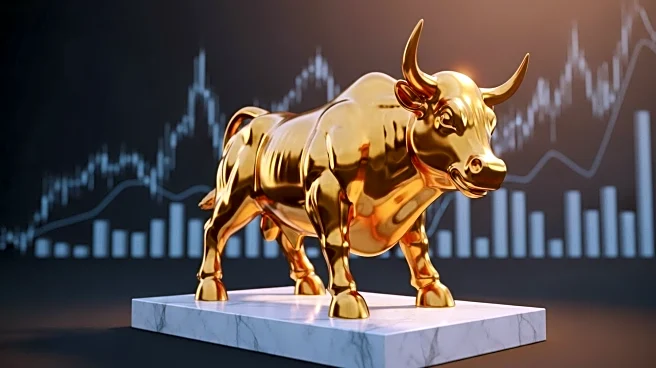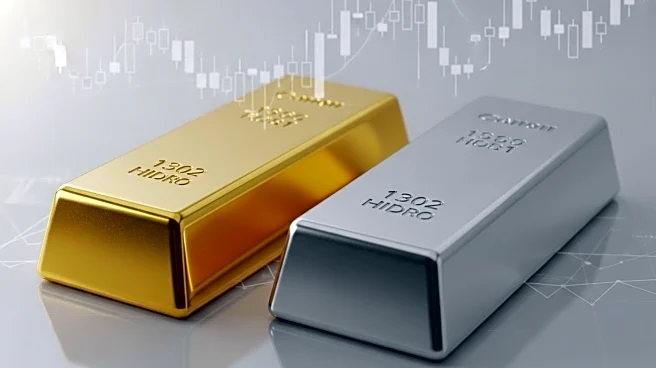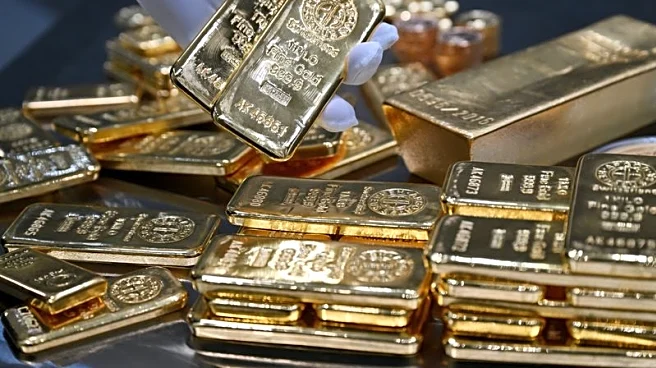What is the story about?
What's Happening?
Gold prices have reached a record high, surpassing $4,000 per ounce, as investors seek safe havens amid growing economic and geopolitical uncertainties. The surge is also fueled by expectations of further interest rate cuts by the U.S. Federal Reserve. Spot gold was up 0.3% at $3,997.09 per ounce, after hitting an all-time high of $4,000.96. U.S. gold futures for December delivery increased by 0.4% to $4,020.00 per ounce. The metal's bullish run is supported by several factors, including increased central bank purchases, renewed interest in gold-backed exchange-traded funds, a softer U.S. dollar, and resilient retail demand. Analysts note that a 'fear of missing out' is contributing to the rally, with investors continuing to buy gold despite its high price.
Why It's Important?
The record-breaking gold prices highlight the current economic climate characterized by uncertainty and volatility. As gold is traditionally viewed as a safe store of value, its rising price reflects investor concerns over potential economic downturns and geopolitical tensions. The anticipation of further interest rate cuts by the Federal Reserve suggests a cautious outlook on economic growth, which could impact various sectors, including finance and commodities. Stakeholders such as investors, financial institutions, and policymakers are closely monitoring these developments, as they could influence investment strategies and economic policies. The surge in gold prices may also affect consumer behavior, particularly in markets where gold is a significant asset.
What's Next?
If the economic and geopolitical uncertainties persist, gold prices may continue to rise, further attracting investors seeking stability. The Federal Reserve's decisions on interest rates will be crucial in shaping market expectations and could either bolster or temper the demand for gold. Additionally, central banks' purchasing patterns and retail demand will play significant roles in determining the future trajectory of gold prices. Analysts and investors will be watching for any signs of stabilization or escalation in global economic conditions, which could influence gold's appeal as a safe haven asset.
Beyond the Headlines
The current trend in gold prices may have broader implications for global financial markets and economic policies. As investors flock to gold, other asset classes may experience shifts in demand, potentially affecting stock markets and currency valuations. The reliance on gold as a hedge against uncertainty underscores the need for robust economic strategies to address underlying issues such as inflation, currency fluctuations, and geopolitical risks. Long-term shifts in investment patterns could emerge, influencing how financial markets respond to future crises.
AI Generated Content
Do you find this article useful?
